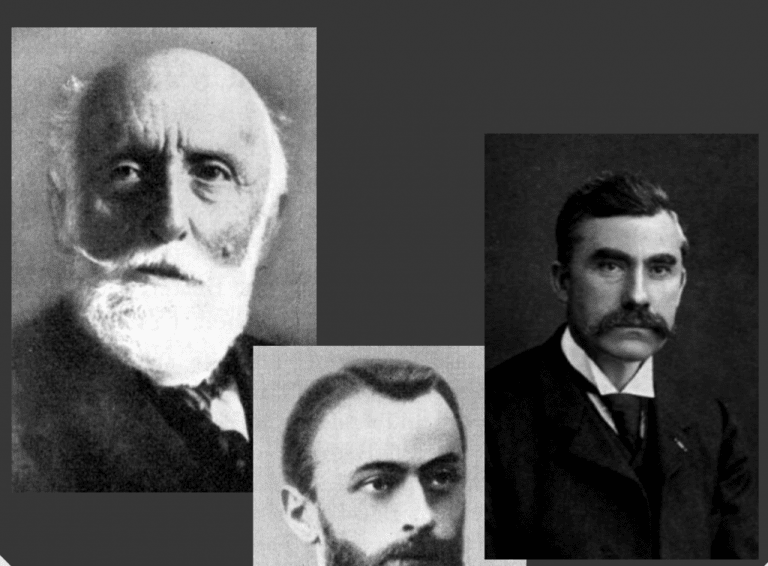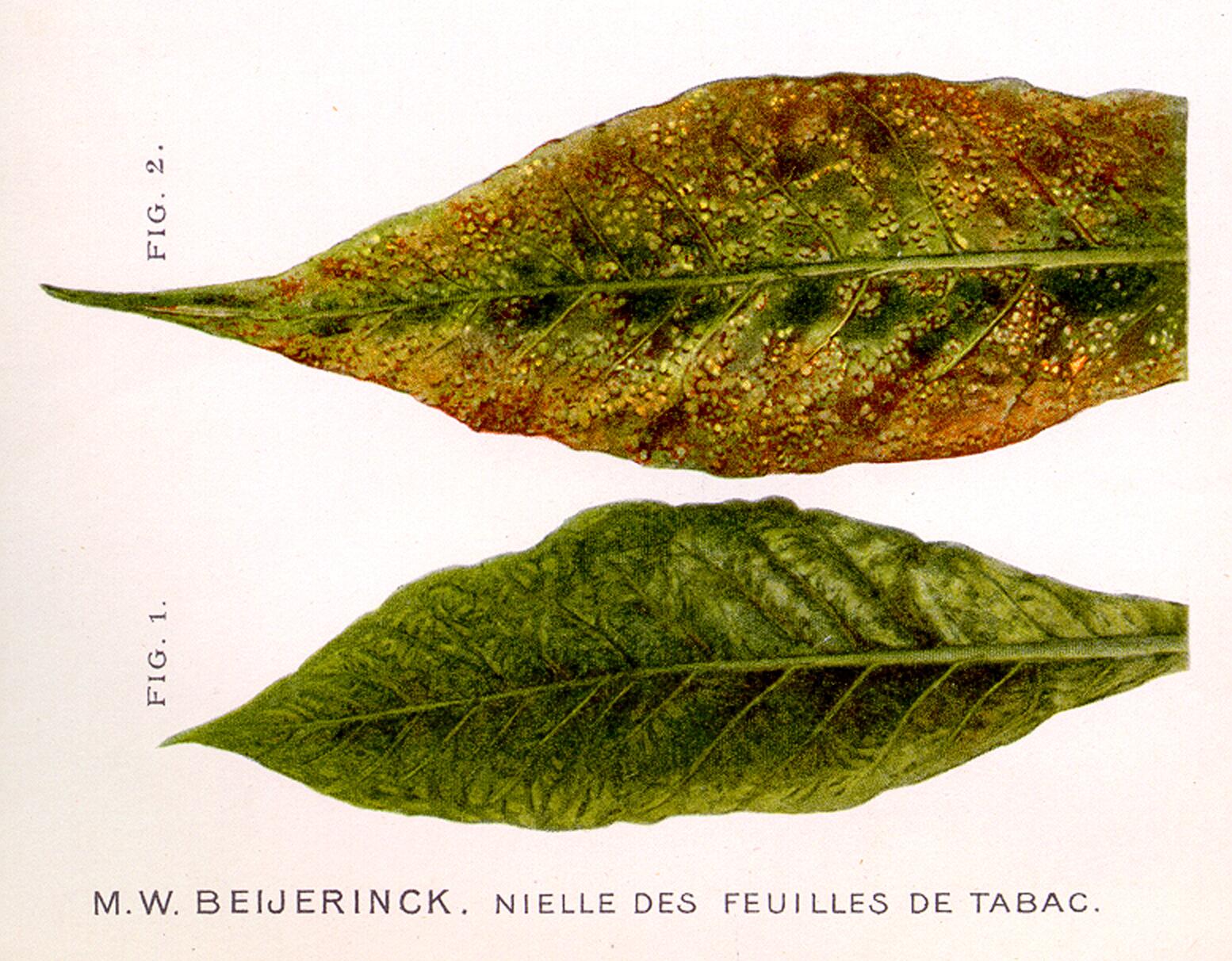Learn everything there is to know about the history of the coronavirus and vaccinations on the Corona Chronicles online exhibition.
The tobacco mosaic virus causes mosaic-like spots on tobacco leaves (Photo: Science Centre TU Delft)
TU Delft’s Academic Heritage and Special Collections Department and the Science Centre have produced a permanent online exhibition called the Corona Chronicles. The exhibition looks at the coronavirus in a historical perspective. But don’t people have ‘corona fatigue’ now? The organiser Sarah Edrisy does not think so. “We approach it from a wide perspective and that makes the exhibition interesting.”
The exhibition brings you back to 1918-1919 when Europe was gripped by another infamous pandemic, the Spanish Flu. TU Delft too went on lockdown. “The exhibition takes the form of an anthology and is divided into four parts. A new subject that we look at from different perspectives is added every week.” Another part is about the discovery and development of vaccinations, ideas around immunisation and the role that milkmaids played. “Vaccinations are a hot topic today,” says Edrisy. The last part will go online on Friday 31 July.
A dive into the archive
Edrisy studied biomedical sciences in Leiden and, as part of the LDE-traineeship (in Dutch), has been the Project Leader at the TU Library since September 2019. Arranging exhibitions is new for Edrisy, but she enjoys it. “Over the last few months, I have regularly dived into the Library archive to see what objects we can use. I really enjoy it.” That the exhibition became an online exhibition is not entirely because of the coronavirus. “Digitisation is the future and you can open many doors with online exhibitions that would otherwise be closed. For example, you can share old and fragile books with everyone by digitising them,” she says.
The first part that is now online is about the person, or rather persons, who discovered viruses. It was Martinus Beijerinck who reintroduced the word virus, which means ‘liquid poison’ in Latin, and used it for this new pathogen. But Adolf Mayer of the University of Wageningen and Dmitri Ivanovsky, the Russian botanist and agricultural chemist, also played major roles in the discovery of viruses.
 Apart from Beijerinck, Mayer and Ivanovsky also played a big role in the discovery of the virus. (Photo: Science Centre TU Delft)
Apart from Beijerinck, Mayer and Ivanovsky also played a big role in the discovery of the virus. (Photo: Science Centre TU Delft)
“It all started with the tobacco mosaic virus, an illness that caused mosaic-like spots on tobacco leaves. Mayer discovered that the illness could be transmitted between plants, but he did not know if the cause was chemical or biological. Ivanovsky discovered that healthy leaves could also become diseased if you put some of the juice of an infected leave on them. This made him realise that there was something in the juice and he thought that it was bacteria or traces of bacteria. Mayer called on Beijerinck’s help. At the time Beijerinck was a teacher at the University of Wageningen.” How Beijerinck came to the right conclusion years after his initial experiments with tobacco leaves, is explained on the special TU Delft Academic Heritage website.
- Visit the Corona Chronicles exhibition at heritage.tudelft.nl/en/exhibitions/corona-chronicles. Part 1 about the people behind the discovery of the virus is now online. There will be four parts in total. The last part of the permanent exhibition will be available online on Friday 31 July.
Do you have a question or comment about this article?
a.m.debruijn@tudelft.nl


Comments are closed.